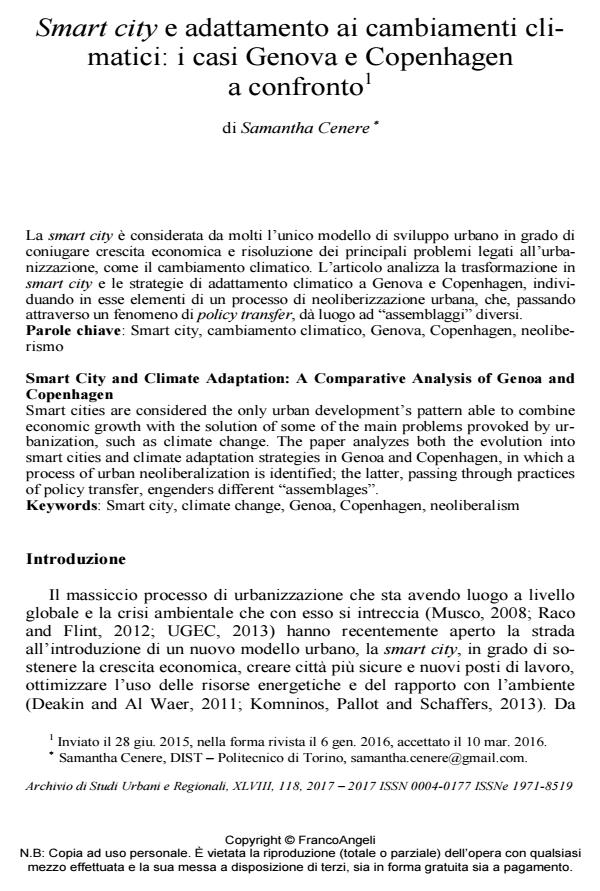Smart City and Climate Adaptation: A Comparative Analysis of Genoa and Copenhagen
Journal title ARCHIVIO DI STUDI URBANI E REGIONALI
Author/s Samantha Cenere
Publishing Year 2017 Issue 2017/118
Language Italian Pages 21 P. 141-161 File size 129 KB
DOI 10.3280/ASUR2017-118007
DOI is like a bar code for intellectual property: to have more infomation
click here
Below, you can see the article first page
If you want to buy this article in PDF format, you can do it, following the instructions to buy download credits

FrancoAngeli is member of Publishers International Linking Association, Inc (PILA), a not-for-profit association which run the CrossRef service enabling links to and from online scholarly content.
Smart cities are considered the only urban development’s pattern able to combine economic growth with the solution of some of the main problems provoked by urbanization, such as climate change. The paper analyzes both the evolution into smart cities and climate adaptation strategies in Genoa and Copenhagen, in which a process of urban neoliberalization is identified; the latter, passing through practices of policy transfer, engenders different "assemblages".
Keywords: Smart city, climate change, Genoa, Copenhagen, neoliberalism
Samantha Cenere, Smart city e adattamento ai cambiamenti climatici: i casi Genova e Copenhagen a confronto in "ARCHIVIO DI STUDI URBANI E REGIONALI" 118/2017, pp 141-161, DOI: 10.3280/ASUR2017-118007